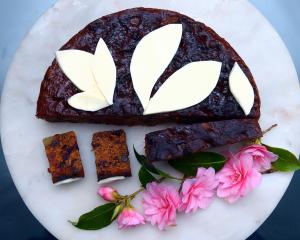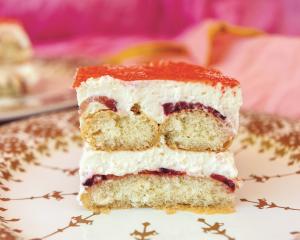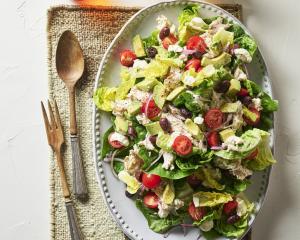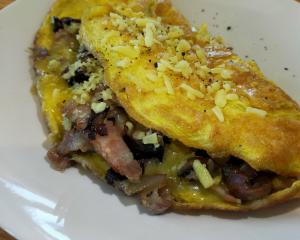
A couple of our team at the bakery are teenagers who regularly remind me that they studied the years of my childhood (’70s and ’80s) in history.
I am, apparently, in what these charming teens refer to as my ‘‘dotage’’ which they highlight by speaking a little louder when talking to me and occasionally ask if I need fresh batteries in my hearing aids.
I don’t wear hearing aids ... yet.
Now, I realise that every generation will think theirs is the best, that the struggles they went through were more than any other generation had to tolerate.
Let’s just agree that every generation has lived through its own challenges and quirks which only others from that generation can appreciate.
One of the quirks I remember from childhood is the endless array of seemingly strange, and often bizarre, warnings and advice. Especially around food.
For example, ours was the generation which saw the demise of white-shelled eggs, apparently believing that brown-shelled eggs were somehow healthier.
There was the cottage cheese conspiracy which, in a remarkable display of marketing magic, had many people in the ’80s believing that adding cottage cheese to something instantly made it a health food.
Then there were the ‘‘warnings’’, sometimes done from a position of good intent — like the acceptable number of eggs a day or the effects of various fats, the opinions on all of which have changed over the decades — and sometimes from a bewildering avoidance of science like ‘‘don’t swallow chewing gum, it stays in your stomach for seven years’’.
Another wee charmer was the warning that if you ate raw pastry or biscuit dough, you’d get worms.
I have no idea where that came from but one of the ways bakers and pastry chefs check their work is by tasting it, often raw as, unlike with cooking, there is normally nothing you can do to remedy the situation once it’s baked.
So, I have to assume that either the warning was wrong or there is a large and undetected worm population hiding inside the international baking community.
That being said, this recipe (above) contains something that I almost prefer raw — frangipane.
On many occasions I have been seriously tempted to attack a bowl of frangipane with a spoon and call it dinner. I have, so far, resisted that temptation, much to my doctor’s approval.
This almond pastry is my go-to pastry for any sweet tart, not only do I enjoy the taste, it also bakes well in situations like this without needing to be blind baked, and can be made with any nut in place of the ground almonds.
Those more familiar with frangipane will notice I have added cream into this recipe, which is not a normal addition.
Feel free to leave it out if you like; I added it to soften the filling a little and provide a silkier finish.
I have also gone with a more bulletproof frangipane in terms of being multi-use. Plus, equal quantities are easy to remember.
Here I’ve used plums, but you can use almost any fruit.
Just be careful of those fruits with a higher water content as they can make the tart soggy.
Plum and almond tart
Almond pastry:
- 450g flour
- 96g ground almonds
- 180g icing sugar
- 270g butter
- Pinch of salt
- 100g eggs (approx. 2)
Method:
Mix together the flour, almonds, sugar, and butter until it looks like breadcrumbs.
It may start to come together into a paste if it mixes for a while or if the butter was warm. No panic, simply stop the mixer and move to the next step.
Add in the eggs, all at once, and gently mix until just combined.
Wrap in cling film and chill for 20 minutes to firm up.
Almond frangipane cream
- 100g butter
- 100g sugar
- 100g eggs
- 100g almonds
- 100g flour
- 50g cream (optional)
Method:
Cream together the butter and sugar until light and fluffy.
Add the eggs in a little at a time, beating well between additions.
Scrape down the sides of the bowl and add in the almonds. Beat until well combined.
Add in the flour and mix until almost fully combined.
Finally, pour in the cream and mix until the mix is fully combined.
Putting it all together
Heat the oven to 175degC.
Line the bottom of a 20cm tart tin with baking paper before lightly oiling the tin.
Using a rolling pin or similar, pin out the pastry until it is around 2-3mm thick.
When it is at the right size, roll it around the rolling pin and carefully unfurl it over the lined and greased tart tin.
Press the pastry into the corners of the tin, allowing more pastry to fall into the tin rather than stretching the pastry too much.
Cut the overhanging pastry off the tin and give the pastry a final tidy-up to make it look good.
Spread the frangipane cream evenly over the bottom. You want the frangipane to almost reach the top but not quite.
Now stud the top of the tart with your chosen fruit
Bake for at least 25 minutes and remove when a knife inserted comes out clean.
It’s a good idea to insert the knife under a piece of fruit to make sure any liquid that has come out of the fruit has been baked off.
Kevin Gilbert is co-owner of Gilbert’s Fine Food in Dunedin.
He is a trained chef and baker who also runs cooking classes.
If you have a question, email him at: kevin@gilbertsfinefood.co.nz














